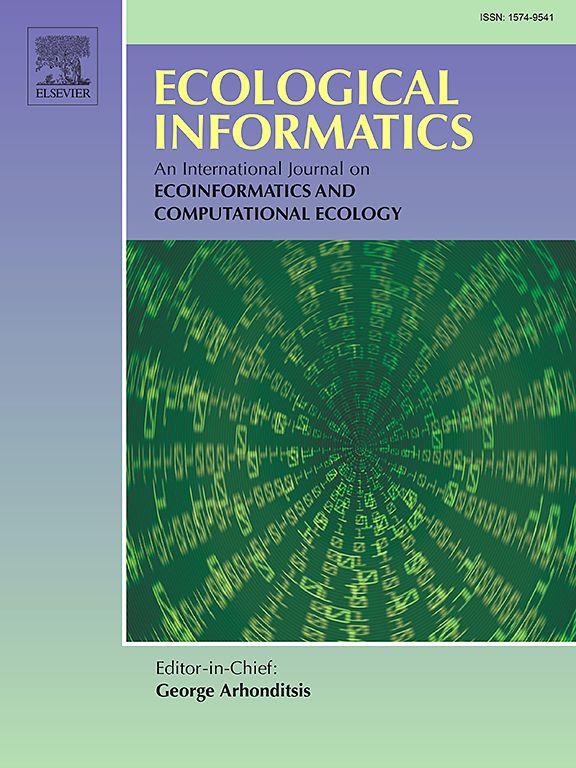Multi-modal, interrelated navigation in migratory birds: A data mining study
IF 5.8
2区 环境科学与生态学
Q1 ECOLOGY
引用次数: 0
Abstract
Understanding how long-distance migratory birds navigate remains challenging, particularly in how they integrate multiple environmental cues. Traditional studies, primarily based on laboratory experiments and displacement studies, may not capture the complexity of navigation in the wild. In this study, we applied a data mining approach to investigate the navigational strategies of greater white-fronted geese (Anser albifrons) during their annual migrations between the Arctic and central Europe. We integrated a decade of tracking data from 117 individuals with high-resolution geomagnetic data (including solar-wind–induced variations), wind conditions, and a potential visual cue. Hierarchical cluster analysis revealed multi-modal and interrelated navigation strategies that flexibly adapted to environmental conditions such as wind, diurnal cycles, and flock-specific dynamics. Under favourable tailwinds, geese maintained stable headings with minimal changes in geomagnetic heading and apparent angle of geomagnetic inclination, consistent with both geomagnetic loxodrome and magnetoclinic routes, enabling efficient flights towards stopovers or simultaneously towards stopovers and final destinations. Geese also appeared to combine visual landmarks with geomagnetic information, adjusting their reliance on landmarks between day and night. Our findings highlight the complexity and adaptability of avian navigation and emphasise the role of multi-modal sensory integration and environmental context in shaping migratory decisions.
候鸟多模式、相互关联导航:数据挖掘研究
了解长途候鸟如何导航仍然具有挑战性,特别是它们如何整合多种环境线索。传统的研究主要基于实验室实验和位移研究,可能无法捕捉到野外导航的复杂性。在这项研究中,我们应用数据挖掘方法来研究大白额鹅(Anser albirons)在北极和中欧之间的年度迁徙期间的导航策略。我们整合了117个人10年来的跟踪数据,包括高分辨率地磁数据(包括太阳风引起的变化)、风况和潜在的视觉线索。分层聚类分析揭示了多模态和相互关联的导航策略,这些策略灵活地适应了风、日周期和群体特定动态等环境条件。在有利的顺风条件下,雁保持稳定的航向,地磁航向和地磁倾斜角的变化最小,与地磁直线和磁斜线路线一致,能够有效地飞往中途站或同时飞往中途站和最终目的地。鹅似乎还将视觉地标与地磁信息结合起来,在白天和黑夜之间调整它们对地标的依赖。我们的研究结果强调了鸟类导航的复杂性和适应性,并强调了多模态感觉整合和环境背景在形成迁徙决策中的作用。
本文章由计算机程序翻译,如有差异,请以英文原文为准。
求助全文
约1分钟内获得全文
求助全文
来源期刊

Ecological Informatics
环境科学-生态学
CiteScore
8.30
自引率
11.80%
发文量
346
审稿时长
46 days
期刊介绍:
The journal Ecological Informatics is devoted to the publication of high quality, peer-reviewed articles on all aspects of computational ecology, data science and biogeography. The scope of the journal takes into account the data-intensive nature of ecology, the growing capacity of information technology to access, harness and leverage complex data as well as the critical need for informing sustainable management in view of global environmental and climate change.
The nature of the journal is interdisciplinary at the crossover between ecology and informatics. It focuses on novel concepts and techniques for image- and genome-based monitoring and interpretation, sensor- and multimedia-based data acquisition, internet-based data archiving and sharing, data assimilation, modelling and prediction of ecological data.
 求助内容:
求助内容: 应助结果提醒方式:
应助结果提醒方式:


